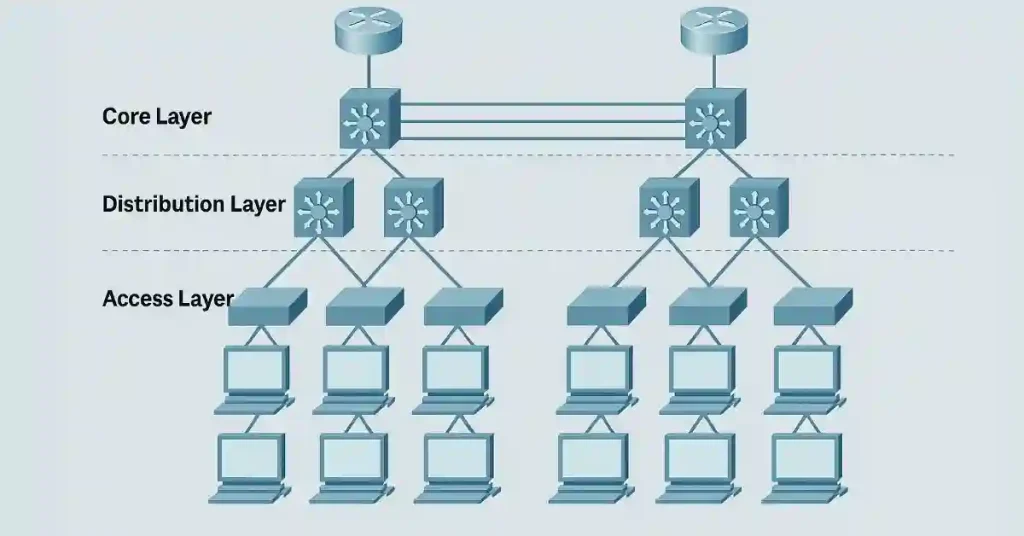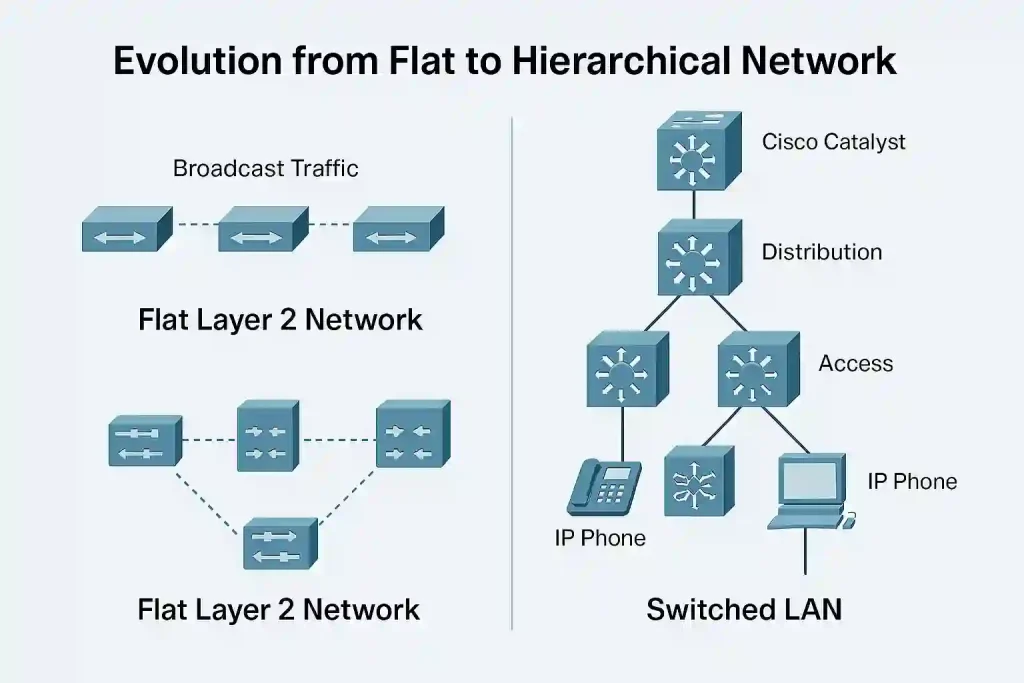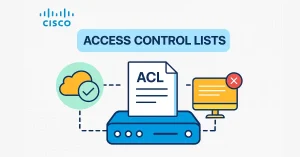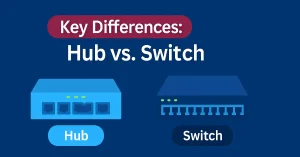A few years ago, flat Layer 2 switched networks, relying on Ethernet hubs and repeaters, were the standard for campus LANs, broadcasting traffic inefficiently. The shift to switched LANs, as shown in Figure 1, introduced hierarchical designs using Cisco Catalyst switches, enabling traffic management, scalability, and advanced features. For CCNA and CCNP students, understanding this evolution is key, covering QoS, IP telephony, and security, core exam topics. This article explores switched network benefits, switch types, and configurations to boost your Cisco certification skills.
Benefits of Switched Networks
Switched LANs, built on hierarchical designs with Cisco Catalyst switches, offer significant advantages over flat networks. Key benefits for CCNA and CCNP students include:
Quality of Service (QoS)
- Description: Prioritizes traffic (e.g., voice over data) using Cisco AutoQoS, reducing latency.
- Cisco Tools: Catalyst 9300 switches support QoS policies with EF marking for VoIP.
- Relevance: Configure QoS (
mls qos,class-map) for CCNA/CCNP exams.
Wireless Network Connectivity
- Description: Integrates wireless access points (APs) with Cisco Wireless LAN Controllers (WLC).
- Cisco Tools: Catalyst 9100 APs provide seamless mobility and security.
- Relevance: Understand WLC configuration for CCNP Enterprise.
IP Telephony and Mobility Services
- Description: Supports VoIP with Cisco Unified Communications Manager (CUCM).
- Cisco Tools: IP Phones and Jabber clients enable mobility.
- Relevance: Study SIP trunking and call routing for CCNA.
Additional Security
- Description: Implements VLANs and access control lists (ACLs) on Cisco switches.
- Cisco Tools: Cisco ISE enhances network access security.
- Relevance: Configure ACLs (
access-list 10 permit) for CCNA/CCNP.
These features make switched networks scalable and secure, aligning with certification objectives.

Switch Form Factors in Switched Networks
Business networks rely on various switch types, and selecting the right form factor—fixed, modular, or stackable—is critical for network design. Below are details and Cisco examples for CCNA/CCNP students:
Fixed Configuration Switches in Switched Networks
Fixed Configuration switches are switches with a fixed number of ports and are normally not expandable. These switches do not support features or options beyond those originally included with the switch. The switch model determines the features and options available, such as if you have a 16-port gigabit fixed switch, you cannot add additional ports when you need them. This category is discussed in further detail below. Cisco Catalyst 2K, 3K, and the Cisco 300/500 series are good examples of Fixed Configuration switches. The further categories of fixed configuration switches are the following:-
- Unmanaged Switches
- Smart Switches
- Managed L2 and L3 Switches
Modular Configuration Switches
Modular switches are expendable switches that come with different-sized chassis, which allow a different number of modular line cards inside the chassis. The modular switches also offer more flexibility in their configuration. If you have a 24-port modular switch, you can easily expand the switch to 48 ports.
Stackable Configuration Switches
A stackable switch is a switch that is completely functional, operating standalone, but which can also be set up to work jointly with another switch in a group. This group of switches will show the characteristics of a single switch but have the port capacity of the sum of all switches. We can connect Stackable switches using a special cable that provides high-bandwidth throughput between these switches. The Cisco Stack Wise Technology allows the interconnection of nine switches in a group. These stacked switches also work as a single larger switch.
Frequently Asked Questions (FAQs)
What is a switched network?
A switched network uses Layer 2 switches to manage traffic efficiently, replacing flat networks with hierarchical designs like those using Cisco Catalyst switches.
How does QoS benefit switched networks?
QoS prioritizes critical traffic (e.g., voice) on Cisco switches, reducing latency, a key concept for CCNA/CCNP QoS configuration.
What are the types of switch form factors?
Switches come in fixed (e.g., Catalyst 2950), modular (e.g., Catalyst 4500), and stackable (e.g., Catalyst 9300) configurations, each suited for different network sizes.
Why replace flat networks with switched LANs?
Switched LANs offer better traffic management, scalability, and security compared to flat networks, aligning with modern Cisco campus designs.
How can I configure a switch for CCNA?
Use Cisco Packet Tracer to practice VLANs (vlan 10) and QoS (mls qos), essential skills for CCNA certification.





